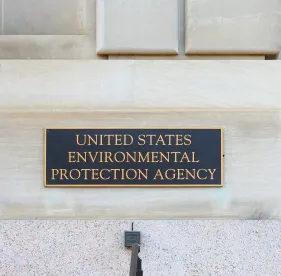The U.S. Environmental Protection Agency (EPA) Office of Chemical Safety and Pollution Prevention (OCSPP) will be reorganizing at the end of September 2020. OCSPP currently consists of the Office of Pollution Prevention and Toxics (OPPT), the Office of Pesticide Programs (OPP), and the Office of Science Coordination and Policy (OSCP). According to reporting in Bloomberg Environmental, EPA is reorganizing within OPPT and OPP, as well as reorganizing at the OCSPP level. EPA has recently completed its first risk evaluations under the Toxic Substances Control Act (TSCA) and begun to concentrate on risk management activities. The reorganization reflects this by taking the current risk management divisions, the National Program Chemicals Division (NPCD) and the Chemical Control Division (CCD), and the Risk Assessment Division (RAD) and reorganizing them to focus separately on existing chemicals and new chemicals.
Commentary
Although specific details of the reorganization are not clear based on media reporting, the article reflects some of the features in OPPT’s reorganization plan from 2018. As we discussed in our May 1, 2018, memorandum, “EPA Rolls Out Newly Proposed Option for OPPT Reorganization,” in that plan, OPPT was looking to combine the existing chemicals regulatory management functions of NPCD and CCD into a single Existing Chemicals Management Division. The article suggests that this new division would also include what had been proposed as an Existing Chemicals Science Division. Similarly, the new chemicals functions of CCD and RAD, which had been slated for reorganization into a New Chemicals Science Division and New Chemicals Management Division, will be combined into a single New Chemicals Division. The article does not clarify whether other aspects of the OPPT 2018 reorganization plan, such as the reorganization of the Pollution Prevention (P2) and Toxics Release Inventory programs, will be included in this reorganization.
As we stated in our May 1, 2018, memorandum, we see significant programmatic and efficiency benefits in the separation of the new and existing chemicals management functions. We also can see the benefit in separating the risk assessment/risk evaluation functions because of the differences between the data available and timeframes for new and existing chemicals. We caution, however, EPA that separating the scientists and engineers by statutory section (i.e., new and existing chemicals) must not allow divergent interpretations of the underlying science between and among the various technical experts. This same imperative applies at the branch level. The Bloomberg Environmental article does not state how the divisions will be organized into branches. It is equally important that individual review teams interpret consistently scientific principles, policies, and information, as it is for two divisions to do so.
The reorganization in OPP seems to be more limited. The article emphasizes changes to the Antimicrobials Division, which has been working energetically to respond to the exploding number of entities seeking registrations for antimicrobial products in response to the pandemic. The article also states that the Endocrine Disruptor Screening Program, that has been in OSCP, will become part of OPP.
Other OCSPP-level functions, including the rest of OSCP and the Office of Program Management Operations (OPMO, the group that supports budget, planning, information technology, and human resources functions for OCSPP and its sub-offices), will be combined into a new entity named the Office of Program Support. The combination of OSCP and OPMO under a single senior manager does reduce OCSPP’s need for a Senior Executive Service position.
Most surprising about the news is the timeline. According to the reporting, the reorganization is slated to be complete by the end of September, just two weeks from now. While we appreciate that is the end of the fiscal year and there is value in starting the new fiscal year with the reorganization in place, the timing is challenging. Even without the pandemic and looming TSCA deadlines, managers and resource staff are scrambling to close the books on the fiscal year. Election year jitters and distractions are also at play. Completing this reorganization in essentially three weeks is ambitious, and we wish OCSPP success in its endeavors.
Senator Tom Udall (D-NM) indicated on September 9, 2020, that under federal law, EPA is required to consult first with Congress before reorganizing OCSPP. Senator Udall did not comment on how Congress might respond.


 />i
/>i
